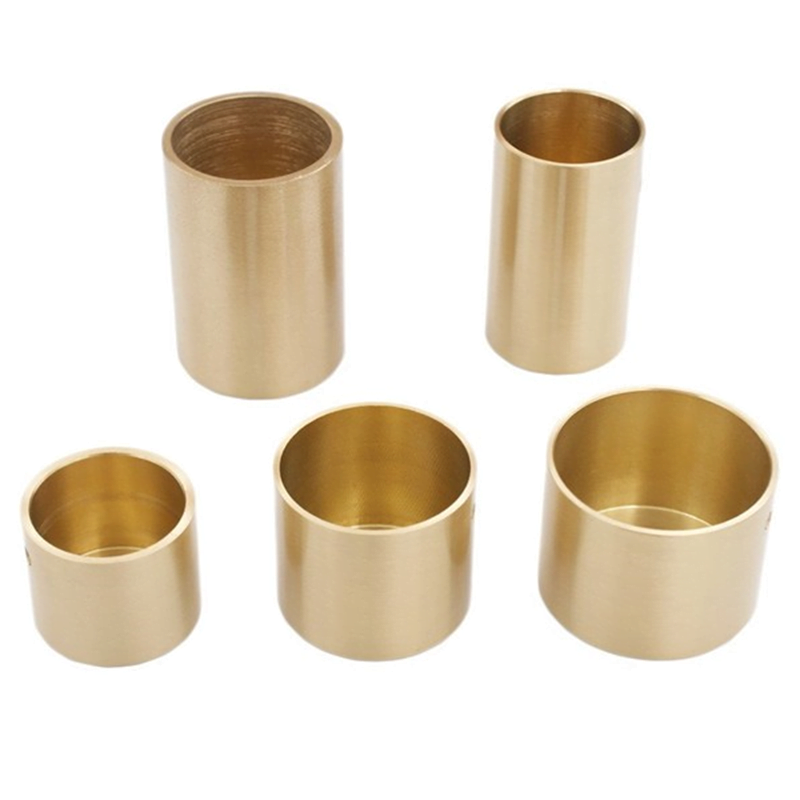導入 Aluminum bronze tubes have become increasingly important in industrial heat exchanger applications due to their excellent thermal conductivity, corrosion resistance, and durability. This guide explores optimization strategies for maximizing heat transfer efficiency and operational performance.
Material Properties and Selection Standard Aluminum Bronze Grades for Heat Exchanger Tubes 学年 構成 熱伝導率(W/m・K) Key Applications C61300 Cu-Al-Ni-Fe 45-52 化学処理 C61400 Cu-Al-Ni-Fe-Sn 42-48 Marine heat exchangers C63000 Cu-Al-Fe-Ni 38-45 High-pressure systems C63200 Cu-Al-Fe-Ni-Si 40-46 Corrosive environments
Comparative Performance Metrics 財産 アルミニウム青銅 ステンレス鋼 銅ニッケル 熱伝導率 40-52 W/m·K 16-24 W/m·K 30-45 W/m·K 耐食性 素晴らしい 良い とても良い Fouling Resistance 高い 適度 適度 コストファクター 1.5-2.0x 1.0x 1.3-1.8x
Design Optimization Strategies 1. Tube Geometry Optimization パラメータ Standard Range Optimized Range Efficiency Impact 肉厚 0.9-1.2mm 0.7-1.0mm +5-8% Inner Surface Finish Ra 1.6-3.2 Ra 0.8-1.6 +3-5% Tube Pitch 1.25-1.5D 1.15-1.25D +4-7%
2. Flow Configuration Optimization Configuration 応用 Efficiency Gain Pressure Drop Counter-flow High ΔT Base reference 適度 Enhanced Counter-flow Critical service +10-15% 高い Multi-pass Limited space +5-8% 高い Cross-flow Gas cooling +3-5% 低い
Performance Enhancement Techniques 1. Surface Enhancement Methods Method 説明 Efficiency Gain Cost Impact Internal Grooving Helical grooves +15-20% +30% External Fins Integral fins +25-30% +40% Knurling Surface texturing +10-15% +20% Micro-channels Internal channels +20-25% +45%
2. Flow Distribution Optimization 技術 Implementation 利点 考慮 Inlet Vanes Flow directors Even distribution Pressure drop Baffle Spacing Optimized gaps Better mixing メンテナンス Pass Arrangement Multiple passes Higher velocity Complexity Header Design Flow equalizers Uniform flow 料金
Operational Parameters 1. Recommended Operating Conditions パラメータ Normal Range Maximum Range 最適な範囲 Fluid Velocity 1.0-2.5 m/s 0.5-3.0 m/s 1.5-2.0 m/s 温度 20-150°C -10-200°C 40-120°C Pressure Up to 20 bar Up to 40 bar 10-15 bar pH Range 6.5-8.5 5.0-9.0 7.0-8.0
2. Performance Monitoring Parameters パラメータ Measurement Method 頻度 Action Threshold Heat Transfer Coefficient Temperature sensors 毎日 <85% design Pressure Drop Pressure gauges Hourly >120% design Flow Rate Flow meters Continuous <90% design Fouling Factor Calculated Weekly >120% design
Maintenance and Efficiency Preservation 1. Cleaning Schedules Service Type Cleaning Method 頻度 Efficiency Impact Light Duty Chemical cleaning 6 months +5-10% Medium Duty Mechanical cleaning 3 months +10-15% Heavy Duty Combined methods 毎月 +15-20%
2. Preventive Maintenance Activity 頻度 目的 Effect on Efficiency Inspection 毎月 Early detection Maintains baseline テスト 四半期 Performance verification +2-5% クリーニング As needed Fouling removal +5-15% 交換 5-10 years Reliability Returns to design
Efficiency Optimization Case Studies Case Study 1: Chemical Processing Plant Application: Process cooler Optimization: Enhanced tube surface Results: 25% efficiency increase 30% reduction in energy costs 40% longer cleaning intervals Case Study 2: Power Generation Application: Steam condenser Optimization: Flow distribution Results: 15% efficiency improvement 20% reduction in pumping power 35% decrease in maintenance 費用便益分析 1. Investment Considerations Improvement Cost Premium Payback Period ROI Basic tubes Base Base Base Enhanced surface +30% 1.5 years 180% Optimized design +20% 1.2 years 200% Combined solutions +45% 2.0 years 160%
2. Operational Savings カテゴリー Potential Savings Implementation Cost Net Benefit エネルギー 15-25% 中くらい 高い メンテナンス 20-30% 低い 非常に高い 交換 30-40% 高い 中くらい
Best Practices Summary Design Phase Optimize tube geometry Select appropriate grade Consider enhancement features Plan for maintenance インストール Proper tube support Correct flow alignment 品質管理 Performance testing 手術 Monitor key parameters Maintain optimal conditions Regular inspection Preventive maintenance メンテナンス Regular cleaning Performance monitoring Condition assessment Timely replacement 将来の傾向 Material Development Advanced alloys 表面処理 Nano-coatings Smart materials Design Innovation 3D printing applications Computational optimization Hybrid systems Modular designs 結論 Optimizing aluminum bronze tubes in heat exchangers requires:
Careful material selection Proper design considerations Regular maintenance Performance monitoring Continuous improvement When properly implemented, these strategies can lead to:
15-30% efficiency improvement 20-40% maintenance cost reduction 25-35% energy savings Extended service life The investment in optimization typically pays for itself within 1-2 years while providing long-term operational benefits and improved reliability.

